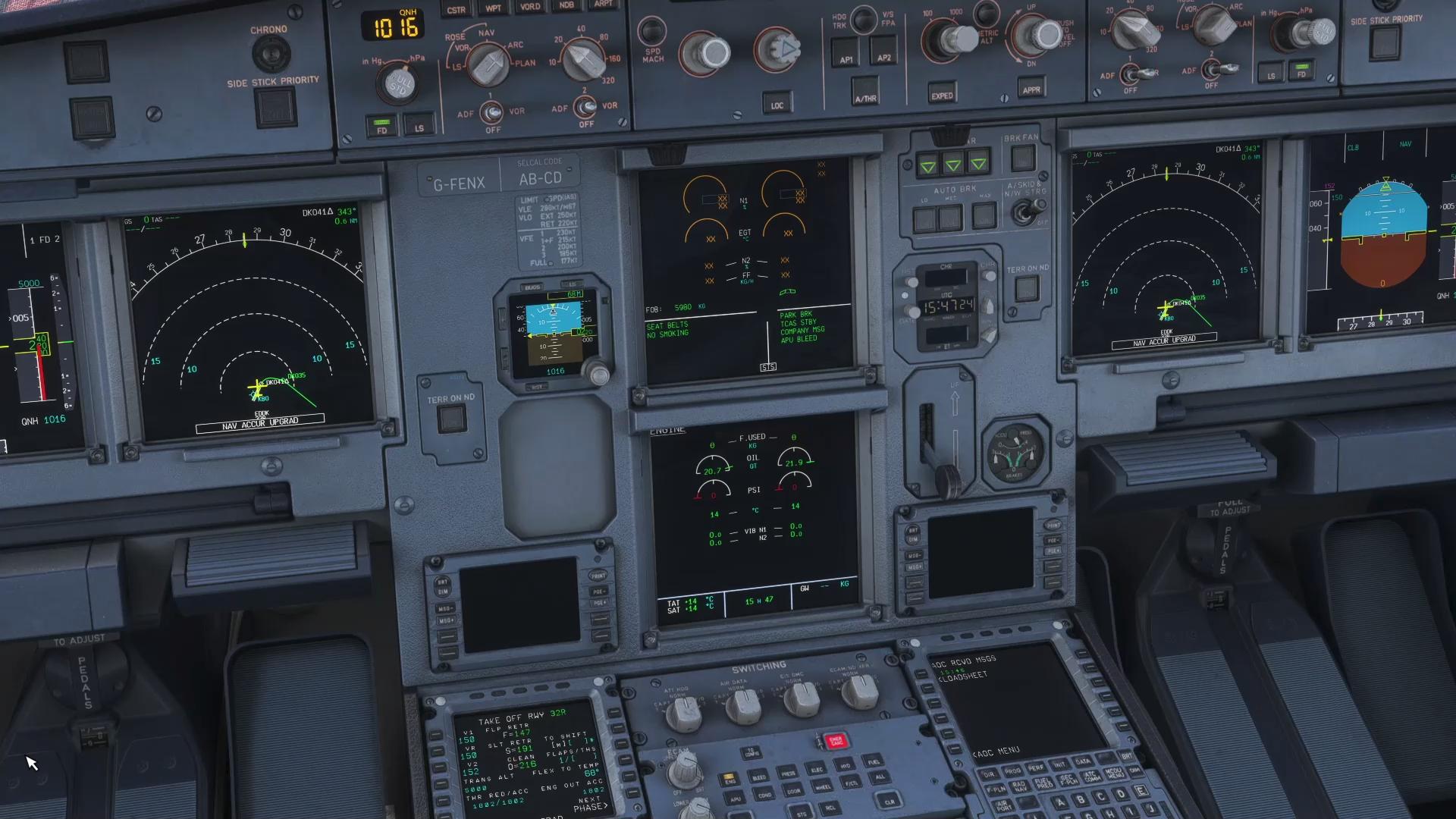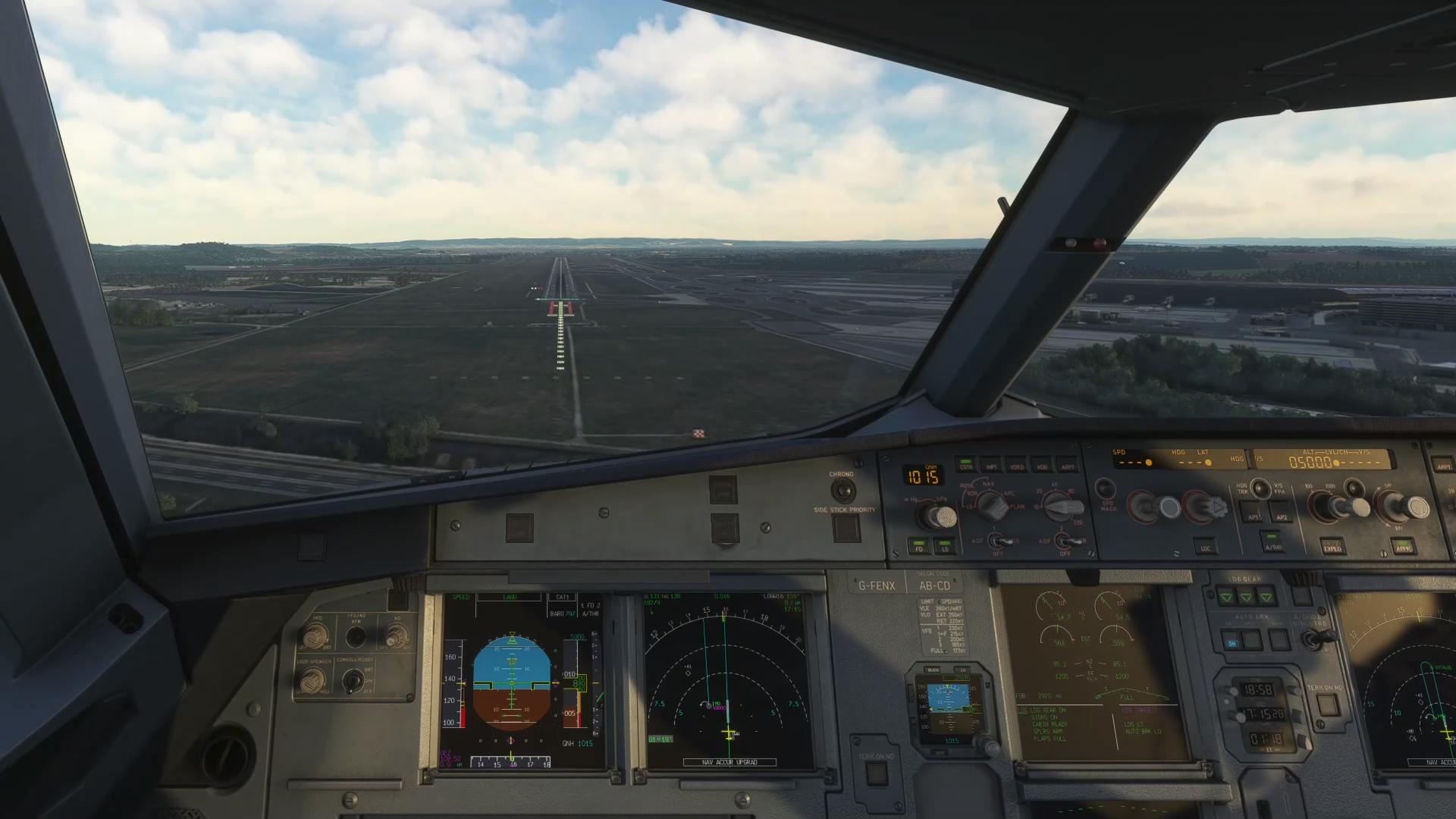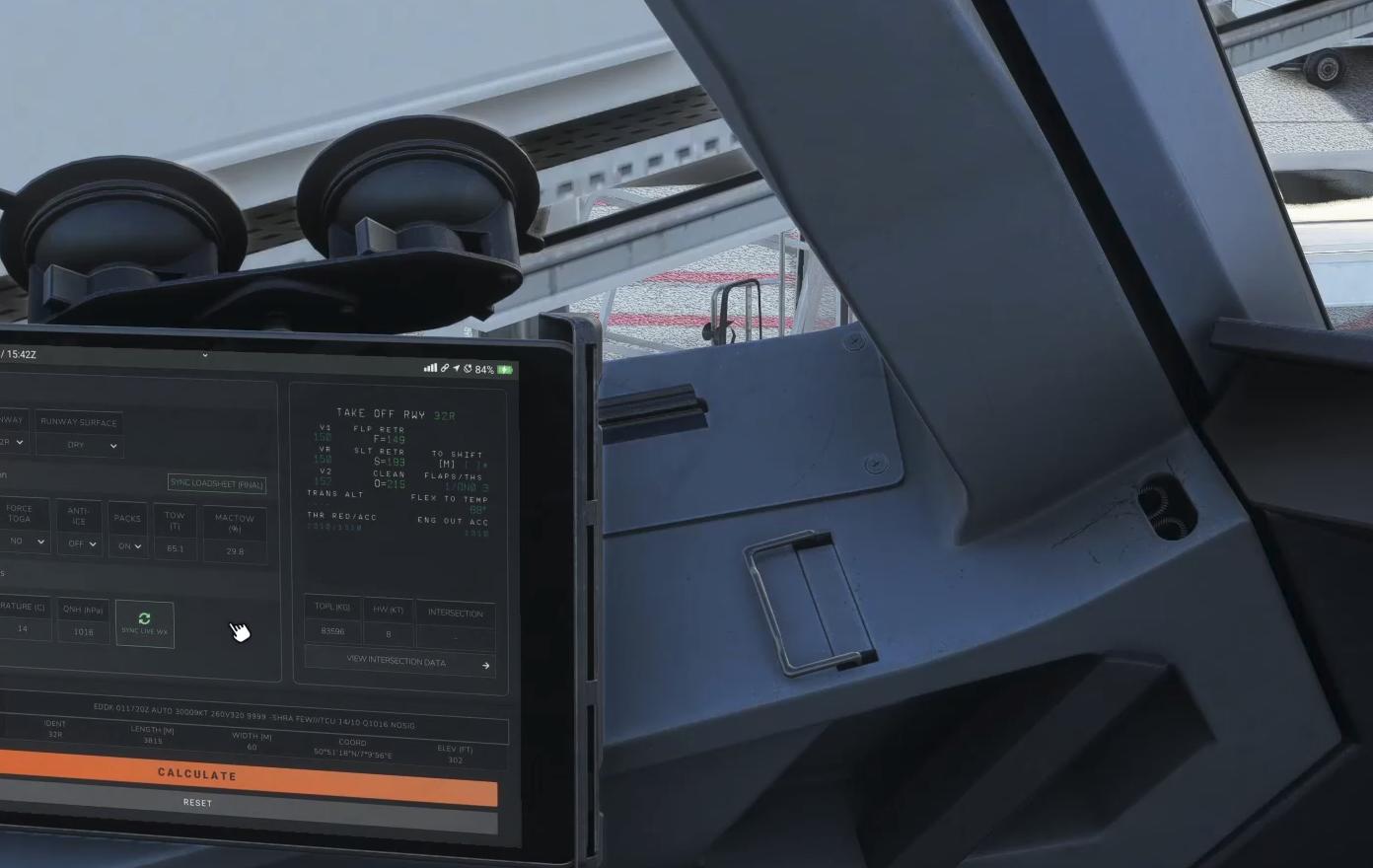
It was predictable in some way that sooner or later, I would want to do yet another ‘upgrade’ in the flight simulator and move to something bigger. After the turboprop Daher TBM-930, which I started flying last year, it was either a private yet or an airliner. There is lots of choice and in the end, I decided to go for an airliner. The big choice to make at this point then is: Airbus or Boeing!? In the end, I decided to go for an Airbus A320 and here again, there are several implementations to choose from: In the Asobo / MS flight simulator, one can choose the A320 that comes with the simulator itself, the open source FlyByWire A320neo or the closed source and not for free Fenix A320ceo. After some investigation, I came to the conclusion that I’d skip the default A320 and go straight for something with more ‘system depth’. Both the FlyByWire and the Fenix A320 seem to be fantastic products and, contrary to my open source nature, I decided to go for the Fenix A320 first. At 50 British pounds, it is very affordable and is said to have an unrivaled system depth, i.e. pretty much everything the real plane does works in the simulator as well. I have no idea how that could be done for 50 GBP, but I was eager to find out.
Choosing An Airliner

So why the Airbus 320 and not a Boeing 737? Well, perhaps my reasons are simple minded and biased, but the main reasons were that the Airbus is flown with a sidestick, which I have, and not a yoke, which I don’t have. Also, perhaps there was also some local patriotism involved and the fact that most of my real world flights as a passenger are in Airbus aircraft due to my preferred choices of airlines and airports. And, now that I think about it, early in my virtual flying adventure, I came across KatiePilot on Twitch, a real world A320 pilot flying an A320 in the virtual worlds as well. Apart from discovering that real life pilots fly in the simulator as well, and I have found many others in the meantime, I was totally flabbergasted when she started talking to air traffic control and that there was actually a response. Who just responded, how does that work!? Little did I know about Vatsim at the time. I have to say that at the time I understood very little of what Katie was doing, but it left a lasting impression. Fun fact: Katie recently said in a podcast that the first time she discovered a flight simulation stream on Twitch she was equally taken aback by the virtual pilot talking to air traffic control and getting a response. But I digress, let’s move on.
In the Airliner, Now How Do I Fly this Plane?
So there we go, after getting myself an A320, I could hop into the cockpit and have a first look around. Despite flying other planes before, I had no idea of how to get that plane off the ground and, even more important, land it safely again. And equally importantly for me: I wanted to fly ‘the Bus’ in the most realistic and real life manner possible. While Katie’s videos are great for those who already know how to fly an A320, I required another source to teach the basics to someone who already knows how to fly virtual general aviation aircraft. I then came across 320SimPilot, another real world Airbus A320 pilot who has a great Youtube channel with highly instructional videos that teach the basics and more advanced skills of flying a virtual A320. So I spent a few days watching numerous of his videos about all phases of flight, trying out things on the ground with the plane until I felt ready to take it up in the air and land it safely again. As all of this was very intense, I decided to do this offline, i.e. without VATSIM air traffic control, even though I felt relaxed about it with other planes. A wise choice as it should turn out later. So after many hours of studying and exercises on the ground to configure the plane, I finally took off, flew my pre-programmed route and landed at another airport. Well, almost.
Bouncy Landings and How To Train Them Away

While 95% of the time, the autopilot files that plane, it’s still required in most cases to land manually. And rather obviously, an A320 behaves very differently from a small general aircraft. In some way, it’s much easier to fly an A320 than a GA plane, as even without the auto-pilot, it’s auto-trimmed and auto-throttled, it doesn’t let you stall and it limits bank angles to safe levels. BUT, and that’s a big BUT, the approach speed of 130-140 knots is twice that of a small airplane, and one sits much higher up and quite far away from the main landing gear. So my first few landings where pretty bouncy, as I rotated the nose too steeply in line with what I knew from GA airplanes. This made the aircraft pretty much drop to the runway with enough force to jump up in the air again and then float over the runway for a while. What a bummer!
After the first few bouncy landings, always at the end of hour long flights, I decided that I needed a tool to train those last 5 seconds without an hour long flight before. In other words, I needed a simulator in the simulator. And such a thing actually exists, developed by, you might have guessed it, another real world airline pilot: FSiPanel. With this tool in the 30 to 50 euro price range, it’s possible to position the Fenix A320 and many other planes on the final approach track of any runway at any airport, on a standard arrival track, or at any altitude at any waypoint on earth. Once positioned, the tool completely configures the plane, including the flight management system for the landing and then hands over control. Invisible hands at work happily flipping the switches. This way, it’s possible to fly an approach and landing, get a report for how well it went, and then repeat the exercise within one minute. An invaluable tool and I got that bounce out of my landings pretty quickly.
Crosswind landings are another fun thing to do, which definitely requires some exercise. Again, FSiPanel got the job done for me, as it can be used with real weather and manually configured goodies like heavy crosswind, rain, gusts, landing against the sun, at night, or whatever you might desire. Interesting note: The FSiPanel user interface might look a bit rough, but I noticed that the simulation software in a ‘real’ simulator used by airlines to train their pilots had a similar interface. So I suppose it’s not by accident it looks the way it looks.
‘For Real’ with VATSIM
After quite a number of offline flights, I felt prepared for my first flight with VATSIM real (virtual) air traffic control. And I got the full show at my maiden flight: A plane in front of me not getting off the runway in time, a go around that I had to fly manually because I had not installed the autopilot go-around option, and a late 90 degrees angle to final instruction by ATC that the autopilot didn’t like because I was too slow and didn’t have the flaps out yet. So the auto pilot quit and left me with a master alarm sound in an already very high workload situation. So I quickly ended up flying an airplane I didn’t quite understand anymore. So I had to disconnect from VATSIM because I felt I could not get the plane under control in a reasonable time, and I didn’t want to ruin the immersion of my fellow virtual pilots around me.
I eventually managed to regain control and land, but it felt terrible. On the other hand, it was a tremendous learning experience that showed that it is one thing to fly a complex airplane when you know exactly what you will do next and quite another thing to fly in an unpredictable world when things never go according to plan, and ATC controllers send you on ambitious trajectories. But fortunately, I record my flights, so I was able to find out why the autopilot quit on me and what I had done wrong to end up in this situation in the first place. So I fired up the FSiPanel simulator in the simulator again to recreate a slow speed situation without flaps and a steep turn to see how to get out of this situation, should I ever make such mistake again. Brilliant!
It’s Not Only About Flying – Performance Calculation, Routing, Maps, etc.

Flying an airliner ‘as real as it gets’ also means to do even more preflight planning then in smaller airplanes, and this is incredibly well implemented as well. If you watch cockpit videos on Youtube of real airliner flights, you’ll notice that the pilots have a tablet attached to their side windows on which they run their airline’s Electronic Flight Bag (EFB). Here, they can have a look at their upcoming route, have a look all the required airport, departure, en-route, arrival and landing charts, do performance calculation for takeoff speeds based on their weight, the current weather and the runway conditions, do a performance calculation for landing to make best use of the runway, etc. etc. All of this can be found in the simulator as well and thanks to Simbrief and Navigraph, about which I have written before, it’s again very close to real live.
A World On Privacy
One thing I’d like to point out here that due to its very nature, flying in an online community means one thing: MS/Asobo, Navigraph, Fenix, Vatsim and probably a couple of others involved see everything you do in the simulator, as it’s all going out into the cloud. This is not a private offline hobby, and one should be aware of this.
Summary and Where To Go Next
What a ride! After a few weeks, I’ve become comfortable in the VATSIM virtual real world with all its unpredictability with my A320 and it’s great fun. But so much more is still ahead, because, make no mistake (pun intended): So far, it’s been mostly ‘normal procedures’, i.e. the aircraft was working perfectly. At some point, the next step in an ‘as real as it gets’ approach is to train abnormal situations and emergencies. Single engine failure at V1, i.e. just at the time during takeoff with the highest speed on the runway seems to be the classic scenario real world pilots have to train in the ‘real’ simulator at least twice a year. But that’s obviously just the tip of the iceberg and a real world QRH (Quick Reference Handbook) and the FCOM (Flight Crew Operations Manual) for the A320 list endless scenarios of what to do when something fails during flight. It’s one thing to handle an issue that you know will happen beforehand, but quite another to handle something unforeseen. Thus, I’m glad the simulator can produce random failures at random times, just like in the real world.
Interesting, I’ve used the words ‘real’ and ‘virtual’ so many times in this post today, but it speaks of the high level of immersion that flight simulation can provide today. And when you hear a real world pilot saying during a steam ‘wow, this feels so real’, there must be something to it.